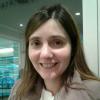Profile of patients admitted to an inpatient detoxification unit during a nine month period
Abstract
'Unidade de Desabituação do Norte' (UDN) is a public structure specialized in treatment of withdrawal syndrome in patients dependent on licit and illicit psychoactive substances in an inpatient ward in Portugal. There are mainly 3 groups of patients admitted: Substance Use Disorder (SUD), Alcohol Use Disorder (AUD) and a combination of both (ASUD). This study aims to characterize patients admitted to UDN, describing their sociodemographic characteristics, principal substances consumed and major comorbidities found. We performed a retrospective, observational and longitudinal study, including all patients admitted in UDN between January and September 2021. Descriptive analysis of data was performed.
During this period were admitted 197 patients. The AUD group was the most prevalent (71%), followed by ASUD (17%) and SUD (12%). Alcohol was the principal psychoactive substance consumed, even when considered only ASUD group (74%). Male sex was most common in all groups, however woman prevalence was higher in AUD (21%). In AUD and ASUD most patients ranged from 41 to 50 years old while in SUD they were younger (31 to 40 years old). In AUD, the majority of patients had 4 or 6 years of schooling while in SUD most had 9 years. In all groups, unemployment was the most common occupational situation. Depression was the principal comorbidity found between AUD patients (9%) while personality disorders were most commonly found in ASUD group (12%). With regard to clinical discharge and outpatient follow up, in SUD 36% of patients were discharged against medical opinion, followed by 24% in ASUD group. The majority of AUD patients (56%) joined a therapeutic community after discharge.
There are several differences between the 3 groups of patients. Defining the principal psychoactive substance consumed is essential, in order to establish an individualized and effective therapeutic plan for each patient.
